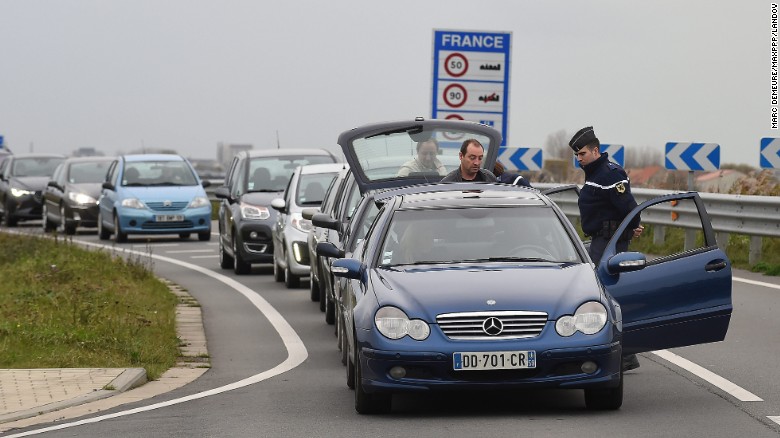In May 2014, Mehdi Nemmouche, a French-Algerian ISIS fighter who allegedly helped guard Western hostages in Syria before returning to Europe, allegedly shot and killed four people at a Jewish museum in Brussels.
In December 2014, a few days after posting an ISIS flag on his Facebook page, Bertrand Nzohabonayo, a French-Burundian extremist, entered a police station in the central French town of Tours and stabbed several officers before being shot dead.
In January, in an attack that shocked the world, Said and Cherif Kouachi, brothers who claimed they were acting on the orders of al Qaeda in Yemen, killed 12 at the offices of the satirical magazine Charlie Hebdo. Their friend, Amedy Coulibaly, who was a fan of ISIS, killed a French policewoman and several shoppers at a kosher market.
Later that month, across the border in Belgium, authorities thwarted a gun and bomb plot they believe was directed by the senior leadership of ISIS to attack sensitive sites in that country. Two Belgian ISIS recruits from the Brussels district of Molenbeek were killed in a shootout in the town of Verviers in eastern Belgium. A third suspect was arrested.
The trio had obtained all the chemicals necessary to make TATP, according to a senior Belgium counterterrorism official.
Belgian link?
On Saturday, Belgian authorities said several addresses in Molenbeek were raided in connection with the Paris attacks. A senior Belgian counterterrorism official told CNN that as of Saturday evening, no links had yet been found between the Verviers cell and the Paris attackers, but investigations are continuing.
In April, French police thwarted an alleged plot by a student, Sid Ahmed Ghlam, to attack churches in Paris. A European counterterrorism official told CNN that Ghlam was directed to carry out the plot when he met with French ISIS fighters in Turkey. When he returned to France, they also discussed attacking a train.
In June, a French ISIS sympathizer beheaded his boss near Lyon, then sent a “selfie” posing with the head to a radical contact in Syria.
In July, four extremists were arrested as they plotted to film the beheading of a senior French military official at the national commando center in Perpignan in southern France.
In August, a Moroccan national, Ayoub el-Khazzani, attempted to launch a gun attack on a high speed train on the Belgian-French border but the attack was thwarted by the heroic intervention of three Americans. El-Khazzani had traveled to Turkey and possibly to Syria in the months before his attack.
European counterterrorism officials suspect that el-Khazzani developed ties to the same network of French ISIS fighters as Ghlam. A European counterterrorism official told CNN the same network, known in European counterterrorism circles as the “Artigat” network, is suspected to play a leading role in the publication of the French language ISIS magazine Dar al Islam, which has repeatedly called for attacks in France.
European counterterrorism officials are concerned French ISIS fighters belonging to the Artigat network have been tasked by the ISIS leadership to organize a string of attacks in France. A number of French-speaking ISIS fighters in Syria have appeared in several videos calling for gun and bomb attacks in France.
The name given to the network refers to the village of Artigat, south of Toulouse, where a group of extremists used to meet in a farmhouse. One of them was Fabien Clain, an onetime resident of Toulouse originally from the island of Réunion who is now believed to be with ISIS and involved with the French language ISIS magazine, according to a European counterterrorism official. Among his circle was Mohammed Merah, a French-Algerian who carried out terrorist attacks in and around Tolouse in 2012, and Sabri Essid, another friend of Merah who is believed to be with ISIS.
French Interior Minister Bernard Cazeneuve announced this week that yet another plot had been thwarted.
On October 29, French police arrested an Islamic extremist who they say was plotting to attack the French naval base at Toulon, the home of the Charles de Gaulle aircraft carrier, which has been used by France in airstrikes against ISIS.
With the uncovering of so many plots, French officials worried that a major attack would get through and are braced for more attempts to launch attacks in the weeks ahead.
As reported by CNN

